Wondering if there’s any specific hiking etiquette or rules of the trail you should know? You’re in the right place!
When it comes to hiking, yes, there are a few basic rules to know to be a responsible hiker.
Maybe you’re new to hiking and have heard people talk about things like trail right of way or Leave No Trace and felt a little lost.
Or maybe you’re a more seasoned hiker starting to utilize more multi-use trails and are wondering whether you should yield to horses or if they should yield to you.
(Spoiler alert: You yield to them.)
But don’t worry, I’ve got you covered!
We’ve been hiking for years on all types of trails, with and without kids. Plus, I’ve also spent lots of time researching the best practices that help us all work together to make hiking enjoyable for all.
While these rules aren’t necessarily unwritten, they aren’t always common knowledge, especially if you’re just starting to hit the trails.
So, to save you time I’ve pulled together all the basics of hiking – let’s just call it hiking etiquette 101 – so that we can all enjoy the best that nature has to offer.
And, most importantly, we’ll make sure you don’t end up being THAT one person on the trail. 😉
While many of these tips are universal to outdoor recreation etiquette, I’ll be sharing them specifically in regard to hiking in this article.
Before we dig into the details, here are a few quick hiking etiquette tips to get started.
Hiking Etiquette Quick Tips
- Trail hierarchy: Horses > Hikers > Bikers
- Uphill hikers have the right of way
- Solo hikers generally should move aside for large groups
- Slower hikers should allow faster hikers to pass
- Follow Leave No Trace Principles, i.e. Disposing Properly of Waste, Minimizing Impact, and Being Respectful of Wildlife and Others
- When hiking with a dog, remain in control and pack out their waste
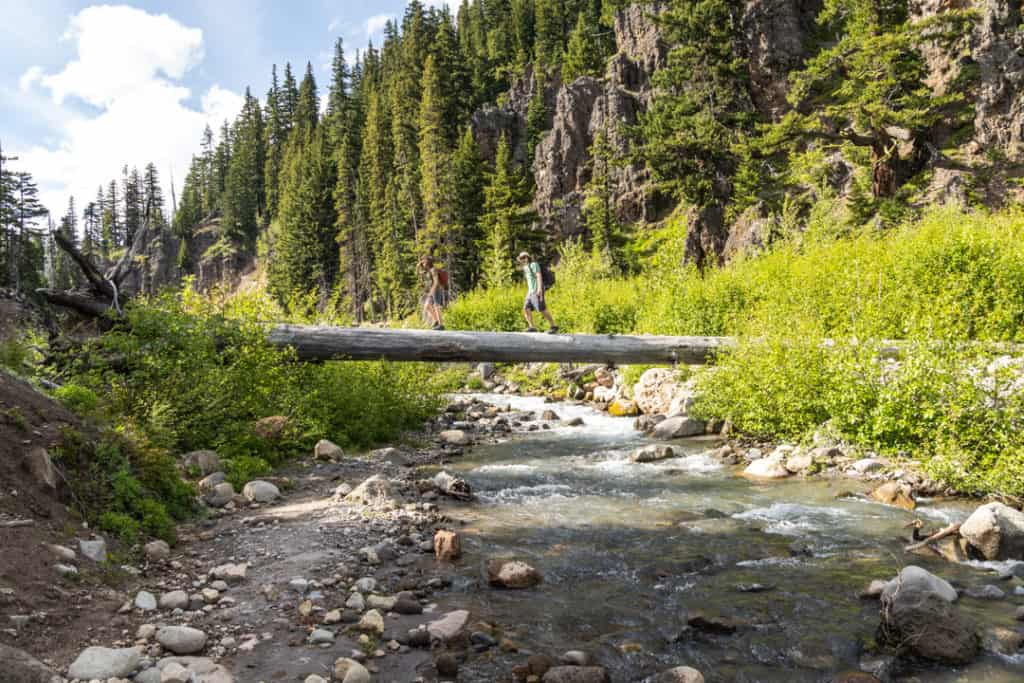
Trail Right of Way: Who Should Yield?
One of the most common trail etiquette questions is about right of way. When you encounter another person, horse, or biker on the trail, which of you is supposed to yield to the other?
I’ll cover each situation in more detail below, but the general hierarchy for a multi-use trail is as follows:
Horses > Hikers > Bikers
Here are some other questions you might have about right of way on the trail.
Do Downhill Hikers or Uphill Hikers Have the Right of Way?
When it comes to fellow hikers, those hiking uphill have the right of way, and those traveling downhill should yield. It’s harder to start and stop when you’re moving uphill, so it’s a nice thing to do to let them go first.
Although if they need a break and stop first (we do this often with the kids!), then it’s totally cool to go ahead around them.
Mountain Bikers vs Hikers: Who Should Give Way?
Technically, mountain bikers should yield to oncoming hikers on shared trails.
BUT I’m always on the lookout if we are on shared trails as well. It can be hard for them to stop quickly, particularly if we’re right around a tight bend where visibility can be tough.
I also think this is where common courtesy and thoughtfulness should come into play.
For instance, if you’ve got plenty of space to move over and you know it will be a challenge for the biker to stop or pick back up their momentum, it makes sense to be kind and help them out by stepping out of the way.
Horses and Pack Animals: Do Hikers Yield to Horses?
Horseback riders and pack stock are the opposite of mountain bikes on shared trails.
This means that if you happen across a horse on the trail, you should yield to the horse and rider.
Avoiding sudden movements or loud noises is also a good idea. It’s important to give horses the right away to prevent spooking them or making them lose their footing.
Letting them take the lead also aids in keeping you and the horse rider safe.
When it comes to yielding on the trail, keep in mind that pack animals (like llamas) have the right of way, too, so be sure to give them plenty of space.
Plus, they’re bigger than you, anyway. 😉
What if I’m Hiking Alone? Solo Hikers vs. Group Hikers
In most situations, if you’re hiking solo, yes, you should move aside for larger groups. It’s easier for one person to step aside than it is for a big group.
This is even more important on narrow trails where you might have to step off trail because one person is less likely to cause damage to the trailside than a large group.
That said, groups can often be slower than solo hikers, and it’s not very nice to keep them stuck behind you forever.
So, if you’re hiking in a group and a solo hiker is gaining on you, it’s a great idea to find a wider section of trail where you can step aside and let the single hiker pass your group.
Other Right of Way Situations
It’s common to encounter faster hikers who catch up to you – especially when hiking with kids! One thing we’ve taught the kids from early on is that slower hikers (which has often been us 😅) should step to the side to let others pass.
In general, you’ll want to treat the trail like a road – hike on the right, pass on the left.
If you’re hiking in a group, it’s fine to spread out when there’s no one around. But when you’re letting others pass, forming a single file line is considerate and makes this much easier.
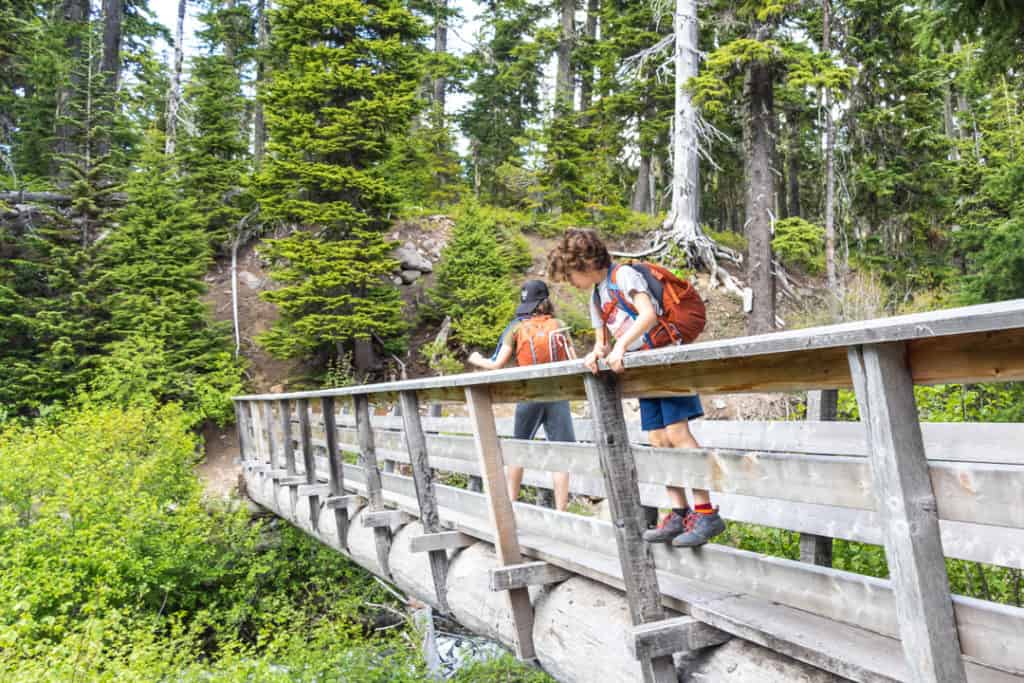
Leave No Trace Trail Rules
You know those signs in the breakroom at work that say, “Your Mom Doesn’t Work Here”?
Yeah, she’s not gonna follow you to the woods and pick up after you, either. Unless you’re two. 😜
But, if you’re not used to being in the woods, it can be confusing.
You know people go backpacking and camping for long periods, but knowing exactly how to handle everything can be a challenge.
And not everything is common sense. It’s okay, though. We’re going to talk about it all here.
Our goal is always to actually leave the area better than we found it, so that often means we pick up trash we see ourselves and pack it out. But, at a minimum, you should at least not leave it worse than it was when you arrived.
Leave No Trace Principles are a set of guidelines that help you to be sensitive to nature and reduce your impact on the environment.
The Seven Principles of Leave No Trace are:
- Plan Ahead & Prepare (make sure you have your hiking essentials with you!)
- Travel & Camp on Durable Surfaces
- Dispose of Waste Properly
- Leave What You Find
- Minimize Campfire Impacts
- Respect Wildlife
- Be Considerate of Others
In my head, most of the rules of hiking and LNT principles fall under one basic category: Be Respectful (of others, of the land, of wildlife).
If you’re heading out with the mindset of being respectful and responsible, you’ll already have most of these covered.
But here’s how we can break them down a bit further in relation to hiking.
Be Mindful of Other Trail Users
In addition to following trail right of way guidelines, when it comes to being considerate of others on the trail, one of the biggest things that often gets discussed are noise levels.
Many people head to nature to escape from the noise and the hustle and bustle of town.
And while you’re probably out in nature to have fun and, often, enjoy time with your friends or family, that doesn’t necessarily mean everyone else on the trail with you wants to know what’s going on at work or hear your favorite playlist blaring for a five-mile hike.
You can help by being mindful of who is around you, how busy the trail is, avoiding loud phone calls on the trail, and taking earbuds instead of a speaker if you like music while hiking.
Note: If you like to listen to music on the trail, I recommend a single earbud so you can listen to your surroundings and stay alert for safety.
Also, if you’re too noisy, keep in mind you’re likely to scare away any animals…and not just the ones you don’t want to see. 😜
Be Respectful of the Land
When it comes to respecting the land, the key factors are traveling on durable surfaces, disposing of waste properly, and leaving what you find.
It’s also a good idea to take a minute before you head out to check the hiking rules and regulations in the area and pay attention to posted signs.
For instance, sometimes meadows and areas surrounding popular attractions may have notices announcing that the area is off-limits to allow for regrowth, etc. When an area is replenishing, it can be very fragile, so it’s essential to pay attention and respect these notices so we can all continue to enjoy it.
As parents, this can often be more challenging if you allow your kids to explore a bit on their own, but if you start teaching them early, they will pick it up.
Now that they are older, our kids are generally better at noticing these things themselves – plus, we’ve tried drilling it into their heads that they need to pay attention to signs, that trails are there for a reason, and, in general, that’s where they should stay.
Trash (including compostables)
Most people, even if they aren’t experienced hikers, know it’s proper etiquette to carry out trash – like paper and plastic. Although, it still doesn’t happen all the time…
We’ve found all kinds of stuff that doesn’t belong in the woods – food wrappers, toilet paper, doggie bags (and not the good kind), toys, and food waste from hiking meals.
Wait a second…did you catch that?
Yes, I included food scraps (like a banana peel). And, to be honest, I didn’t always realize this. 😬
But there are big reasons for not leaving even compostable food scraps behind. One of the most important reasons is that animals can find and eat them. And, while something like an apple core may seem harmless, it can encourage them to keep coming closer to hiking trails and people. Plus, it looks and smells gross when you come upon it.
Human Waste
Everyone poops.
It’s normal. But what’s not normal is leaving a pile on the side of the trail. Ew.
You don’t always get to choose when you want to make a bathroom stop. Especially if you’re hiking with kids.
But you should follow some general hiking bathroom etiquette guidelines if you need to relieve yourself when you aren’t at a restroom.
Peeing in the Woods
When it comes to urinating in the woods, you should generally be 200 ft away from water sources such as streams, ponds, or lakes.
You’ll also want to find a secluded spot so you don’t expose yourself.
If you’re a female, you can squat to pee or consider using a pee funnel (I have this one and love it). I don’t have to fully drop my pants (a.k.a. less chance of giving someone a show they didn’t want), and I can stand up to pee. You can carry a small amount of toilet paper with you and place it in a zip-top bag to carry out, or bring something like a bandana or Kula cloth for use as a “pee rag” or wipe.
Pooping in the Woods
If there’s any chance of pooping in the woods – with kids, can you ever really predict this?! – you’ll need to go prepared.
When packing your bag for hiking, make sure you have a small trowel or shovel for digging a hole – they make lightweight versions specifically for this purpose. Also, you’ll want to bring some toilet paper, a sealable plastic bag, and hand sanitizer.
If you have these items, you’ll be prepared if you need to go.
Take your supplies with you to find your spot. Make sure to stay at least 200 feet from water sources, campsites, and trails. Find a spot where you have a little privacy and with loose enough soil so you can dig a hole 6-8 inches deep to poop over.
Once you’re done, cover the hole back in with the dirt you dug out, put a rock or branch over the top to help keep animals from digging, place your used toilet paper in your plastic bag, clean your hands, and you’re done!
Some areas actually require waste to be packed out. Most places are okay with the above guidelines, but it’s always good to double-check.
Stay on Trail
I know, I know. I just told you to go off-trail to poop!
And you should.
But, in general, you should spend most of your time on the designated trail to prevent damage to flora and wildlife. And, when you must go off-trail, be mindful of where you are and avoid things like stomping wildflowers and other plant life to reduce human impact in fragile areas.
Be Respectful of Wildlife
When we’re hiking, we are visiting the home of wildlife, so it’s essential to be respectful of that. This means things like keeping a safe distance, not feeding wild animals, and being careful not to disturb nesting areas.
Hiking Trail Etiquette for Dogs on the Trail
If you love hiking with your dog, there are a few things you’ll want to keep in mind.
First, be sure to choose dog-friendly trails. Many allow dogs, but not all do, so it’s a good idea to check before you head out.
Pet Waste
Wanna guess what the biggest issue we see with pets on hiking trails is?
If you guessed poop, you’re right! 💩
This brings me to the first piece of hiking etiquette for dogs on the trail: pack out their waste in dog poop bags.
You can tie the doggy bag to the outside of your backpack to carry it out. Or, if you happen to be hiking somewhere where you can bury human waste, you can also dig a hole to bury your dog’s poop if you prefer.
I will never forget one particular trailhead we encountered a few years ago. It’s the starting point for several hikes near Mt. Hood, and I can’t even tell you how many piles of dog poop we saw in the first 1/2 mile of the trail. So gross!
Stay in Control of Your Dog (or Other Pets)
We’re dog people and love dogs.
BUT even I don’t love it when a dog I don’t know runs up to one of my kids, and I’m not sure if they’re friendly. 😳
Many trails require leashes, and it’s usually the best way to ensure you have control over your pet. However, if you are hiking somewhere that allows dogs to be off-leash, you must be confident in their recall training and your ability to keep them under voice control. Hiking can present situations your dog isn’t used to or familiar with that can spur behaviors they wouldn’t do at home.
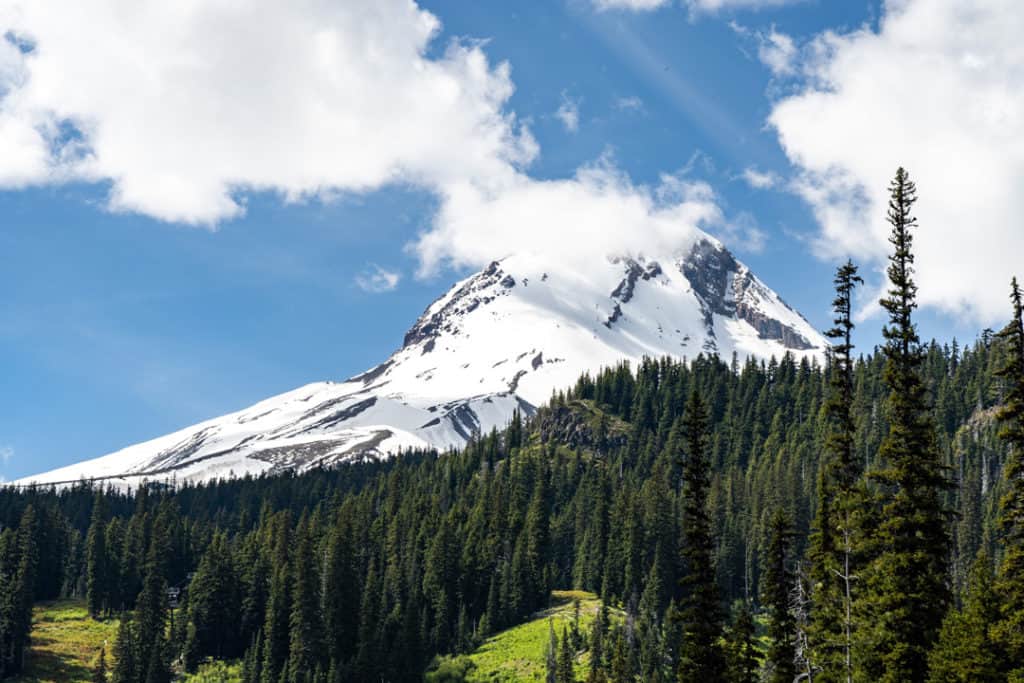
FAQs About Basic Hiking Safety Rules and Trail Etiquette
Why do uphill hikers have right away?
Uphill hikers get the right of way because…well…gravity is on the side of the downhill hiker! 😄 It’s easier for those cruising downhill to stop or step aside than it is for those huffing and puffing their way up. Think of it as a ‘hiker helping hiker’ sort of thing.
What is the #1 etiquette rule while hiking?
The numero uno rule of hiking etiquette is simply this: Treat others how you would like to be treated! In the great outdoors, we’re all here to embrace Mother Nature, find some inner zen, and have a whole lotta fun. If we all respect each other’s space and leave things better than we found, it will make things better for everyone.
What if I have to go to the bathroom during a hike?
If nature calls while you’re out embracing nature, no stress! The key is to be prepared and respectful. Carry a small trowel to dig a hole at least 200 feet from water, trails, and campsites, and cover it up when you’re done. Pack out any toilet paper or other hygiene products in a ziplock bag.
Note: Some areas require that you pack out everything. Yes, including your poop, so double-check before you head out!
Final Thoughts About the Rules of Hiking
As you can see, the basics of hiking and proper trail etiquette are pretty simple overall. It all boils down to respecting Mother Nature and each other out there on the trails. If we all work together and do our best to follow them, it will make the outdoors better for all of us!
Before you go…
Now that you’ve mastered hiking etiquette, you might wonder what other outdoor etiquette you should know.
Luckily, I’ve got you covered with what you should (and shouldn’t) do at camp in this article all about camping etiquette. It’s a must-read before you pitch your tent on your next camping trip. 🏕️

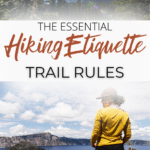

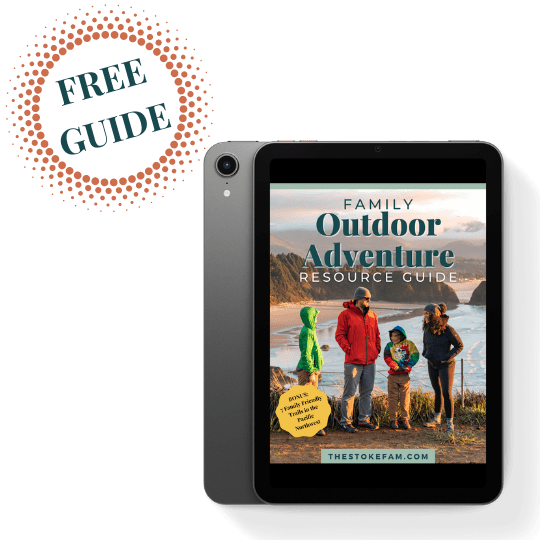
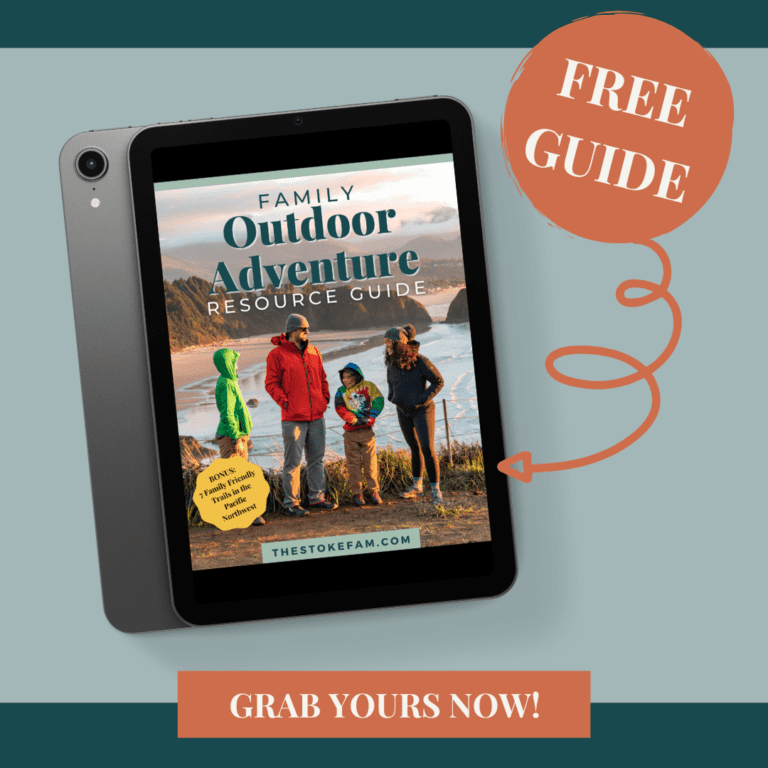
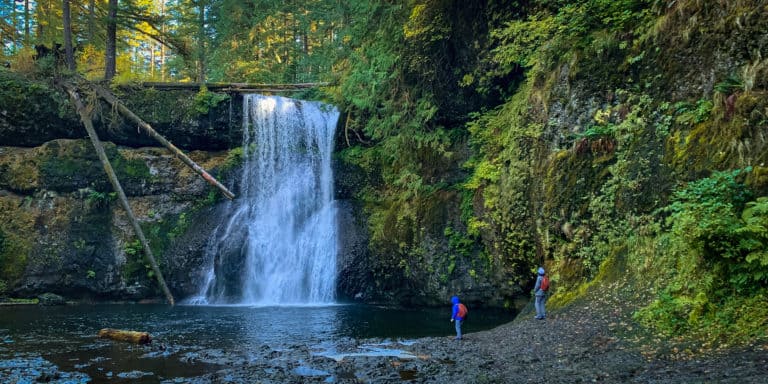

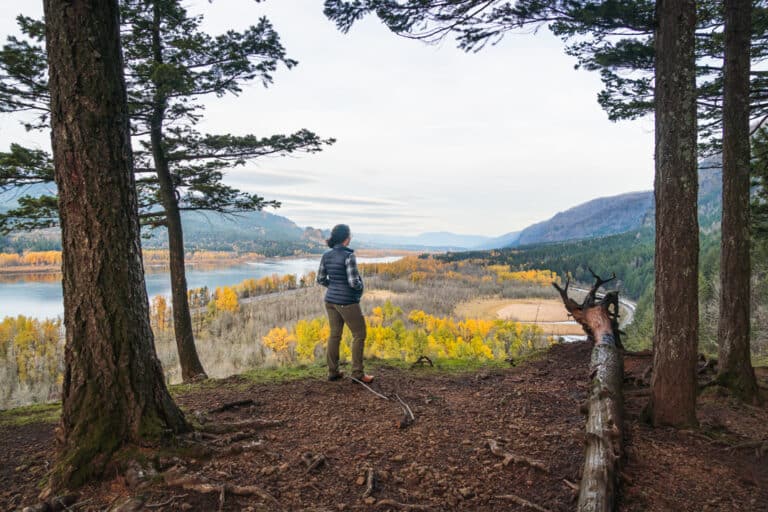
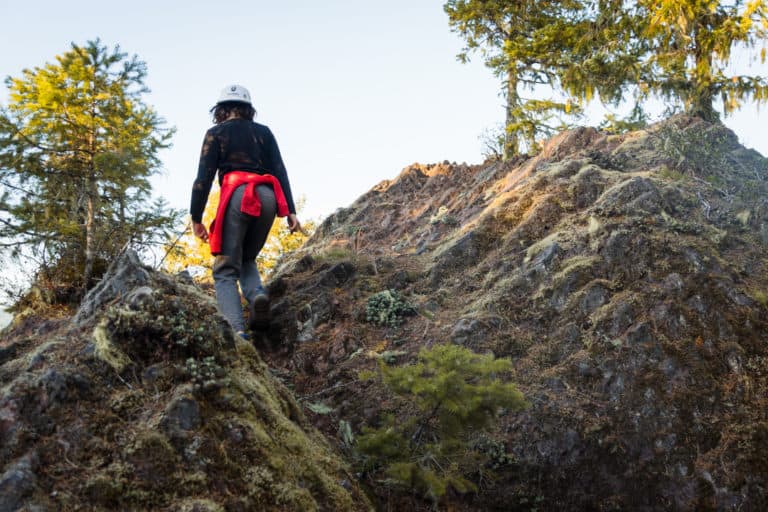
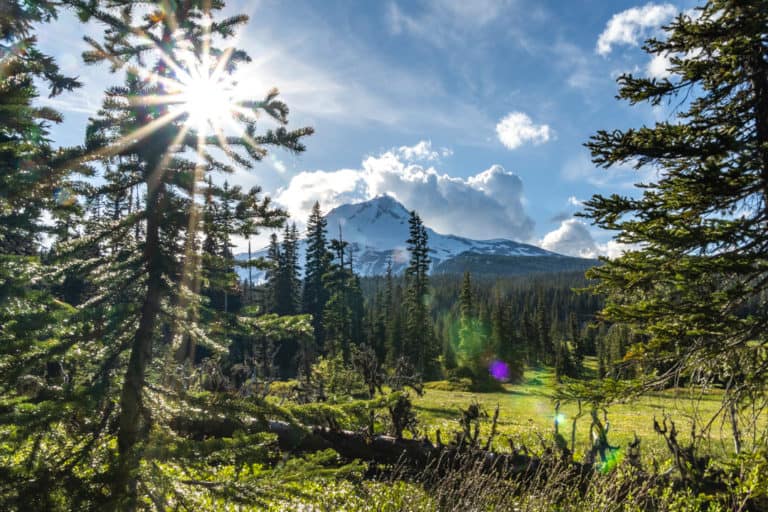
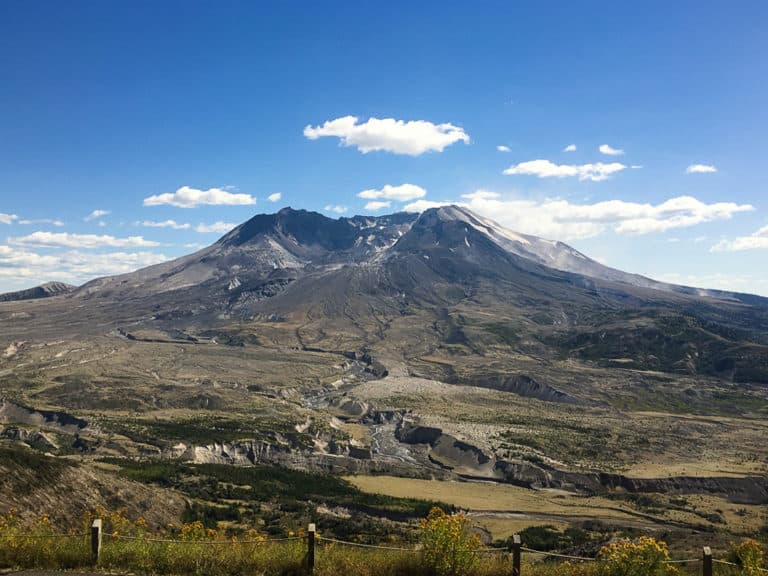
These are great! Definitely good for people to know 🙂
Right?! We think so too…some of them we’ve known for a while, but there are a few we’ve learned over the last several years. Definitely good to know!